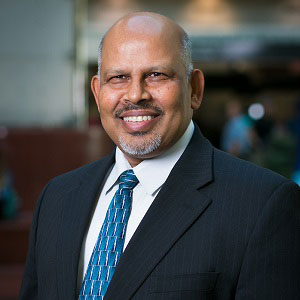Just how safe is Europe’s ‘ultra-safe’ aviation industry?
Posted: 27 March 2017 | European Cockpit Association | No comments yet
Members of the European Parliament, researchers and pilots gathered last week (22 March) for a breakfast debate.


Hosted by MEPs Agnes Jongerius (S&D) and Georges Bach (EPP) – the conversation examined the key findings of the recent ‘Safety Culture in European Aviation’ study by the London School of Economics (LSE) and EUROCONTROL. Pilots called on decision makers to stop spreading “alternative truths” and instead recognise that not all airlines honour the same safety culture principles and that some business and employment models could be detrimental to aviation safety.
“The LSE Study makes it hard for anybody to question the existence of a link between safety and socio-economic factors in aviation”, says ECA President Capt. Dirk Polloczek.
“The decisions taken in the management boardroom on commercial priorities, on business set-ups and on employment forms, do have an undeniable impact on the safety culture of an airline. Because safety culture is an important precursor of safety, this study is a wake-up call for companies and EU decision-makers alike.”
The LSE study reveals a number of clear trends & gaps in Europe’s aviation safety culture: Atypically, pilots in self-employment, on zero- hour contracts or in temporary agency or pay-to-fly (P2F) schemes have a significantly more damning perception of their airline’s safety culture than their colleagues. This gap between pilots on atypical contracts and directly employed pilots is a finding that echoes previous scientific studies (e.g. ‘Atypical Employment in Aviation’, Ghent University, 2015) that identified atypical employment as an emerging trend which could negatively impact safety.
Further alarming gaps in safety culture perception exist between network, low-cost and cargo carriers:
Join our free webinar: Revolutionising India’s travel experience through the Digi Yatra biometric programme.
Air travel is booming, and airports worldwide need to move passengers faster and more efficiently. Join the Digi Yatra Foundation and IDEMIA to discover how this groundbreaking initiative has already enabled over 60 million seamless domestic journeys using biometric identity management.
Date: 16 Dec | Time: 09:00 GMT
rEGISTER NOW TO SECURE YOUR SPOT
Can’t attend live? No worries – register to receive the recording post-event.
“While traditional network carriers still score high on many safety-related items, there is a striking discrepancy with low-cost and cargo carriers on all categories measured by the researchers,” explains Ignacio Plaza, ECA Deputy Secretary General.
“The industry must dig deeper to identify – and to address – the underlying reasons why some airlines have a weaker safety culture than others.”
The safety culture gap is particularly striking when it comes to the pilot fatigue: 83% of pilots working in cargo and 76% in low-cost companies state that pilots are tired at work (compared to an average of 52% for all pilots surveyed), and the same is true for 64.5% of pilots on atypical contracts. However, only a few are comfortable to file a fatigue report – meaning that fatigue is widely under-reported.
Fatigue is widely under-reported…
Lack of trust in safety reporting and a reluctance to report is another serious problem identified by the LSE study. Only 23% of pilots consider that National Aviation Authorities manage safety reports well and less than 50% think that aviation authorities take safety seriously.
“This lack of confidence in the reporting system has important consequences on safety oversight,” states Dirk Polloczek.
“In a sector where there are few accidents and serious incidents, aviation authorities measure safety performance mainly with regard to the reports received. But if pilots and other safety professional do not submit reports, or they are not processed well, our whole safety management and oversight system is at risk.
“This is yet another reason why Europe’s pilots are committed to working together with authorities, researchers, decision-makers and the airlines to address the weak links identified by the LSE study and to improve the safety culture in all airlines in Europe.”
As ever, let us know your thoughts by commenting below…
Stay Connected with International Airport Review — Subscribe for Free!
Get exclusive access to the latest airport and aviation industry insights from International Airport Review — tailored to your interests.
✅ Expert-Led Webinars – Gain insights from global aviation leaders
✅ Weekly News & Reports – Airport innovation, thought leadership, and industry trends
✅ Exclusive Industry Insights – Discover cutting-edge technologies shaping the future of air travel
✅ International Airport Summit – Join our flagship event to network with industry leaders and explore the latest advancements
Choose the updates that matter most to you.
Sign up now to stay informed, inspired, and connected — all for free!
Thank you for being part of our aviation community. Let’s keep shaping the future of airports together!
Related topics
Aeronautical revenue, Air traffic control/management (ATC/ATM), In-flight activity, Safety
Related organisations
EUROCONTROL, European Cockpit Association, London School of Economics (LSE)

















